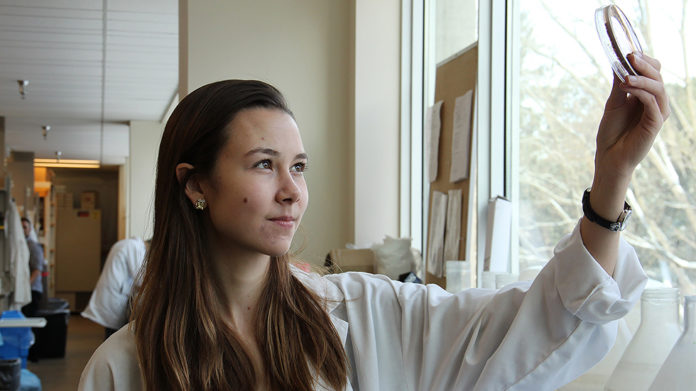Bacterial infections like pneumonia or diarrhea used to be the number one cause of death in the developed world, but are now straightforward to treat with antibiotics. However, if we can’t keep up with the arms race of antibiotic resistance, it could easily become an alarming global problem.
To fight back, it’s essential to keep discovering antibiotics, and preferably ones that aren’t closely related to ones we use already. A whole new class of antibiotics that kills bacteria in a new way would be the strongest defence against antibiotic-resistant superbugs like drug-resistant Staphylococcus aureus (MRSA).
Researchers at McMaster University and Université de Montréal did just that when they found that a pair of molecules — complestatin and corbomycin — work on bacteria in a way that has never been observed before. Their study was published in Nature.
“Bacteria have a wall around the outside of their cells that gives them shape and is a source of strength,” said McMaster PhD student and first author Beth Culp in a press release.
“Antibiotics like penicillin kill bacteria by preventing building of the wall, but the antibiotics that we found actually work by doing the opposite — they prevent the wall from being broken down. This is critical for cell to divide.”
By preventing the cell wall from breaking down, the new antibiotics let bacteria build their own prison. Trapped inside the rigid cell wall, they are no longer able to grow or multiply. Instead, bacteria grown with complestatin and corbomycin form twisted and knotted chains of cells.
The search for these compounds started by looking at soil bacteria called actinomycetes, a common source of glycopeptide antibiotics. Mapping the family tree of glycopeptides led the authors to a gene cluster without known self-resistance genes — genes that protect the bacteria from their own antibiotics.
Hoping that this gene cluster might include previously untapped antibiotics, the authors purified the two glycopeptides used in the study. Notably, corbomycin was previously undiscovered.
Both corbomycin and complestatin are non-toxic to eukaryotic cells, such as animal and human cells. However, because they’re not readily dissolved in water, the authors used the antibiotics in a topical lotion to treat superficial MRSA skin infections in mice. The treatment reduced the bacterial load 100-fold in 33 hours.
The team continues to look for more compounds, and has already found others that share the same mechanism for attacking bacteria. They’re also tweaking their chemical properties to see if they can make it possible to administer them to patients in different ways.
There’s a rich diversity of molecules in the biological world, but many screens for new antibiotics just turn up the same compounds we already know. This new method makes the discovery process smarter, helping uncover more tools in the fight against infection.





































